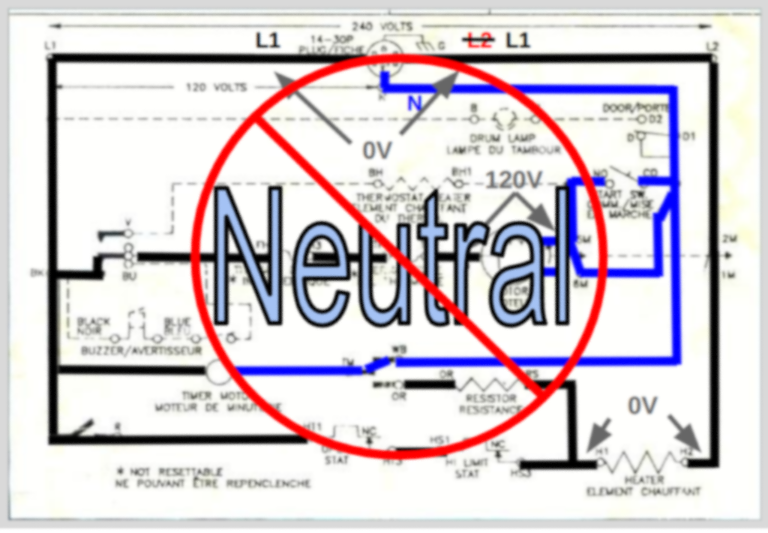Why Referencing Neutral in 240v Circuit Diagnostics is a Bad Idea
When diagnosing 240V circuits, referencing the neutral wire can lead to misleading readings and potential misdiagnoses. In typical residential electrical systems, 240V appliances operate between two hot wires, L1 and L2, each providing 120V relative to neutral but 240V relative to each other. Neutral is generally not part of the 240V circuit, and using it as a reference point can cause confusion.

Case in Point
A common issue arises when one of the hot legs, say L2, is lost. In such cases, L1 may backfeed through the appliance's components, causing both sides of the circuit to show 120V relative to neutral. This can mislead technicians into believing both L1 and L2 are present and functioning correctly, when in reality, the appliance lacks the necessary 240V differential to operate properly. More specific information here: The Diagnostic Fallacy of Referencing Neutral in 240v Circuits - The Tech Circuit™
How to Avoid Getting "Burned" by Neutral
To avoid this diagnostic fallacy, it's advisable to measure voltage directly between L1 and L2 when assessing 240V circuits. This approach ensures an accurate reading of the voltage supplying the appliance. Referencing neutral or ground in these diagnostics can result in incorrect assessments, as these are not components of the 240V circuit.
Summary
In summary, for accurate diagnostics of 240V circuits, focus on measurements between the hot wires, L1 and L2, and avoid using neutral as a reference point. This practice will help prevent misinterpretation of voltage readings and ensure effective troubleshooting.

